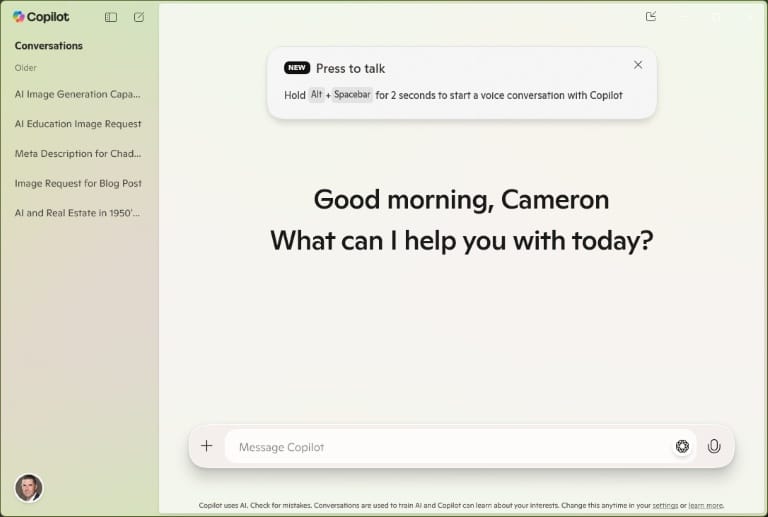What AI is everyone using?

AI is reshaping our daily activities, both at work and in leisure. Think about chatbots that provide answers in a flash or applications that create stunning videos and images with a few clicks. In this piece, we’ll spotlight some of the buzzworthy AI tools out there, breaking down what they can do and what makes them stand out. From writing support to video editing and project management, there’s an AI option out there that could be just what you’re looking for.
Overview of AI Popularity
Several elements are driving the rising interest in artificial intelligence across various sectors. AI chat assistants like chatbots and virtual helpers, such as Alexa and Siri, are making everyday tasks simpler and more efficient. In education, platforms like Duolingo and personalized learning tools demonstrate how technology enhances the user experience. In finance, applications like Fyle and Youper streamline processes and aid decision-making.
The attention around AI models, including GPT-4 for generating content and DALL-E for creating images from text prompts, is also growing. Cultural shifts, such as the explosion of e-commerce and social media platforms like Twitter, foster instant communication and interaction.
Additionally, advancements in machine learning and robotics are influencing how people view AI, showcasing its advantages in daily life, from traffic navigation with Google Maps or Waze to AI transcription services like Trint. While issues related to data security and fake reviews remain, the general intrigue with what AI can offer is propelling its acceptance.
What AI is Everyone Using?
AI is making waves across various sectors with applications like chat assistants and machine learning tools. In education, platforms such as Duolingo are shaking up language learning using natural language processing, while transcription services like Trint make it easier to keep records of conversations. These tools help users accomplish tasks more smoothly in finance and e-commerce, improving data security and management.
Take, for example, the way AI models help fine-tune content or analyze customer interactions on social media. Virtual assistants like Alexa and Siri are also part of this tech evolution. There’s a growing enthusiasm for tools like GPT-4 for creative tasks and DALL-E for turning text into visuals. As people and businesses dive into robotics and apps that manage traffic with services like Google Maps and Waze, they remain aware of challenges, such as the rise of fake reviews.
The boom in AI applications reflects a shift toward embracing technology for streamlined operations and richer user experiences, deeply influencing how we work and interact every day.
Leading AI Apps in the Market
ChatGPT
ChatGPT is your go-to AI chat assistant, designed to make conversations smoother and more engaging. It’s perfect for tackling everything from answering questions to offering personalized recommendations and content creation.

Whether you’re a student using apps like Duolingo to boost your language skills or someone in finance using tools like Fyle to keep expenses in check, ChatGPT fits right in. Imagine having a chat that feels as effortless as talking to a friend or a virtual assistant.
While it shines at generating helpful responses and managing queries on the spot, there are some bumps along the way. Issues like data security and accuracy with complicated tasks can trip it up. And if you’re exploring creative tools like DALL-E for images or Trint for transcribing, you might find those have features that suit you better. Remember, ChatGPT is just one helpful tool in the ever-expanding toolbox of AI solutions.
Claude
Claude stands out among AI tools for its smarts, practical application, and strong reasoning skills. As a savvy AI chat assistant, it harnesses machine learning to effectively understand and generate content. With its knack for natural language processing, Claude handles various tasks across fields like education and finance. This platform shines when it comes to coding and creative questions, proving its adaptability compared to other models like GPT-4 and DALL-E.
It also tackles data security issues by sticking to ethical standards and cutting down on fake reviews common in e-commerce. Users can chat with Claude naturally, making it a handy virtual assistant, right up there with Siri and Alexa. Claude’s got real-time traffic updates covered, working seamlessly with Google Maps and Waze. Other applications, such as Youper and Fyle, tap into Claude’s tech, highlighting what AI chatbots can do, including transcriptions through services like Trint.
In the end, Claude prioritizes user experience while keeping its AI practices ethical and ensuring data privacy.
Gemini

Gemini takes center stage in AI applications, thanks to its strong reasoning skills and high-quality visuals. Users enjoy its smooth integration for tasks such as natural language processing, making it a handy chat assistant. In education, Gemini tailors learning experiences, adjusting to individual preferences like language acquisition through platforms like Duolingo and Fyle. In finance, it streamlines tasks to improve accuracy and efficiency.
Its capabilities also shine in robotics and astronomy, where handling large datasets is important. Many users share positive feedback about Gemini, noting its user-friendly interface compared to competitors like chatbots and virtual assistants like Siri and Alexa. But, there are also worries about data safety and the risk of fake reviews, which drive users to seek trustworthy solutions. The popularity of AI models like GPT-4 and DALL-E in creative areas showcases Gemini’s strong competitive edge.
On a practical level, people appreciate tools like Google Maps and Waze for live traffic info, and they count on AI transcription services like Trint for quick documentation.
Perplexity

Perplexity helps gauge just how unsure an AI chat assistant might be when it dishes out answers. For users, it’s a handy indicator of the chances that the AI is nailing it or missing the mark. A low Perplexity score generally means users can count on the AI, whether they’re cruising through schoolwork, shopping online, or tackling finance questions.
Grasping Perplexity is a game-changer for making chats with AI assistants like Siri or Alexa feel more smooth and reliable by enhancing natural language skills.
ChadGPT

ChadGPT is your go-to AI chat assistant, designed to spark engaging conversations without getting tangled in tech jargon. Thanks to smart natural language processing, it knows how to make interactions feel natural and friendly. Users love it for providing accurate responses that often outshine traditional chatbots.
In education, ChadGPT helps students learn with features that rival popular language apps, while in finance, it’s there for professionals with handy tools that simplify tasks. It doesn’t stop there—whether you need efficient note-taking or real-time traffic updates, ChadGPT connects seamlessly with transcription services and mapping tools.
Need a virtual assistant? ChadGPT has got your back with commands that make managing everything from calls to astronomy a breeze. Sure, there are worries about data security and misinformation, but ChadGPT still shines as a top choice in e-commerce. It’s all about harnessing the power of AI to make life easier and more productive.
Llama
Llama really stands out in the crowded AI scene thanks to its top-notch natural language processing skills. This platform is a champ at generating content from simple text prompts, making it super handy in sectors like education and e-commerce. Its machine learning algorithms serve up more accurate results compared to other models you might know, like ChatGPT and Claude.
In real-world uses, Llama can whip up virtual assistants that perform tasks like making phone calls and managing user questions, just like Siri or Alexa. It’s making waves across various fields, helping out in finance with tools like Fyle and in health through apps like Youper. Llama also lends a hand in robotics and astronomy by tackling complex data analysis.
When it comes to navigation, it’s got Google Maps and Waze covered by analyzing traffic conditions. Plus, in the realm of AI transcription services like Trint, Llama aids in providing quick transcriptions that streamline communication. It even cuts through the noise on platforms like Twitter to spot fake reviews, boosting data security and building consumer trust in online shopping.
Microsoft Copilot

Copilot really shines in the AI arena thanks to its impressive skills in machine learning and natural language processing. Users across various sectors, including finance and education, appreciate how it boosts productivity. From scheduling calls to automating tasks, it offers practical solutions for creating content and managing time effectively.
What’s cool is how Copilot teams up with virtual assistants like Siri and Alexa, letting users interact with its features via voice commands. Many users love it for making meeting notes easier through AI transcription services, like Trint, which provides reliable records. As AI keeps progressing, we can expect Copilot to roll out even more features, particularly focused on privacy and security to build trust, especially in areas like e-commerce where fake reviews are a concern.
Looking ahead, future updates might integrate with services such as Google Maps and Waze to deliver real-time traffic updates and better travel route planning. As these AI tools continue to evolve, Copilot is set to adjust to the varying demands from industries like robotics and astronomy, all while keeping the experience friendly and familiar, like using apps such as Duolingo and Fyle.
xAI Grok
Grok is the AI you call when you want the real story, not yesterday’s news. Unlike the models that need a nap before they can process current events, Grok is built for speed and relevance—making it the go-to for breaking news, trending topics, and anything that happened after your last coffee break (3). Its specialty? Surfacing the latest info with a side of wit, so you get up-to-date answers without the usual AI monotone. Grok’s integration in platforms like ChadGPT means you can tap into live news, social media buzz, and rapid-fire updates, all without slogging through stale search results. If you’re tired of AI that’s always a step behind, Grok is the one that keeps pace with the real world—no jargon, just fresh facts and a little attitude to keep things interesting.
Top AI Apps in Different Sectors
AI in Content Creation
AI is transforming the way we create content across various sectors like education, finance, and e-commerce. With tools like chat assistants and chatbots, users can whip up content more smoothly. For instance, education platforms such as Duolingo tailor language learning experiences through smart algorithms, while apps like Fyle make expense tracking less tedious.
However, it’s not all smooth sailing—issues like fake reviews can undermine trust in e-commerce, and data privacy remains a big concern with AI. Services like Trint provide fast meeting transcriptions, letting creators concentrate on what really matters: making great content. Meanwhile, creativity tools like DALL-E and GPT-4 help generate images and writing prompts, making diverse content creation a breeze.
Bringing AI into everyday routines boosts productivity by automating mundane tasks, helping creators focus on their unique goals, whether it’s crafting eye-catching graphics or navigating traffic with apps like Google Maps and Waze. As AI advances, more professionals will tap into this tech to enhance their content creation processes.
AI in Customer Support
AI is stepping up customer support in some pretty smart ways. Think chat assistants and chatbots that handle inquiries with ease, thanks to machine learning and natural language processing. These bots can pick up the phone, tackle FAQs, and deliver instant answers, making everything run smoother. When companies integrate AI into their customer support, satisfaction levels often soar.
Take virtual assistants like Alexa and Siri, for instance—they make real-time help a breeze and keep interactions flowing. In other fields like education, apps like Duolingo are offering solid user support, while Waze and Google Maps guide drivers with efficiency.
That said, rolling out AI solutions isn’t always smooth sailing. Companies need to keep data secure to fend off fake reviews, and there’s the constant balancing act of automation versus that all-important human touch. Getting a handle on complex AI models, like GPT-4 or DALL-E, can be tricky, and ensuring the right content reaches customers is no small task. Even tools like Fyle and Youper can streamline interactions, but they require a watchful eye to make sure everything operates as it should.
Factors Driving AI Usage
Recent technological strides are driving the embrace of artificial intelligence. Improvements in machine learning and natural language processing boost the capabilities of AI chat assistants and chatbots. Tools like GPT-4 have changed the game in sectors like finance and education, with apps such as Duolingo customizing learning experiences and platforms like Youper offering personalized health support.
As consumers seek convenience, virtual assistants like Siri and Alexa are being seamlessly woven into daily tasks, including smart navigation with Google Maps and Waze, which help dodge traffic jams. Economic pressures encourage businesses to adopt AI solutions for an edge over competitors, evident in e-commerce platforms that enhance customer interaction and tackle fake reviews. Robotics also plays a part, finding uses in fields from healthcare to astronomy.
With a focus on data safety and efficiency, AI transcription services like Trint streamline documentation processes, benefiting from these advancements. Each of these elements contributes to how AI is transforming current practices.
Challenges and Concerns in AI Adoption
Organizations worry about data privacy and security when incorporating AI technologies, such as chat assistants and virtual helpers. Many AI models rely on extensive datasets, which raises concerns over potential data breaches and misuse. Sectors like finance and e-commerce are particularly cautious, anxious that sensitive customer information could be at risk.
Ethical challenges, including the potential for fake reviews or biases in chatbots, may slow adoption in areas like education and healthcare, where trust matters significantly.
Moreover, companies often struggle with getting their workforce on board, as using AI applications necessitates employees learning new technologies.
For example, employing AI transcription services like Trint or voice assistants like Siri means staff must sharpen their skills in natural language processing and machine learning.
Additionally, as AI enhances areas such as robotics and traffic management using tools like Google Maps and Waze, a skills gap can emerge, making it harder for teams to keep up. Solutions like Duolingo and Fyle can help close these gaps, but they require dedicated time and resources.
Future Trends in Artificial Intelligence
Emerging technologies such as machine learning and natural language processing are set to have a major impact on artificial intelligence. In education, apps like Duolingo customize learning experiences using user data, leading to better student results. Virtual assistants like Siri and Alexa simplify day-to-day tasks, highlighting how AI chatbots are becoming increasingly useful.
In finance, these AI tools streamline operations, while in e-commerce, they confront issues like fake reviews head-on. The introduction of AI models such as GPT-4 and DALL-E will create new opportunities for generating content with just a few words. Ethical progress in AI, especially in robotics and data protection, could boost public confidence and lead to new regulations.
Additionally, combining AI with technologies like quantum computing might transform various sectors, improving traffic management on platforms like Google Maps and Waze or upgrading AI transcription services like Trint. AI applications are also branching out into areas like astronomy and health, with innovative tools like Youper and Fyle enhancing interactions through phone calls and chat, fundamentally changing our connection with technology.
FAQ
What are the most popular AI tools currently being used?
Popular AI tools include ChatGPT for natural language processing, TensorFlow for machine learning, OpenAI’s DALL-E for image generation, and Microsoft Azure AI for cloud solutions. These tools enable developers to create chatbots, automate tasks, generate content, and more.
How is AI being integrated into everyday applications?
AI is integrated into everyday applications through virtual assistants like Siri and Alexa, smart home devices that automate tasks, personalized recommendations on streaming services, and chatbots for customer service. Additionally, AI enhances photo editing apps and language translation tools, making daily tasks more efficient and user-friendly.
Which industries are leveraging AI the most?
Key industries leveraging AI include healthcare for diagnostics and personalized treatment, finance for fraud detection and algorithmic trading, retail for inventory management and customer insights, and manufacturing for predictive maintenance and quality control. These sectors utilize AI to enhance efficiency and decision-making.
What are some examples of AI technologies people are using right now?
People are using AI technologies like virtual assistants (e.g., Siri, Alexa), chatbots for customer service, recommendation systems on Netflix and Amazon, AI-driven email filtering, image recognition in social media, and language translation apps like Google Translate.
How can I find out which AI solutions are trending in my field?
Follow industry blogs, join relevant LinkedIn groups, and participate in webinars. Use tools like Google Trends and BuzzSumo to track popular AI topics. Explore platforms like Gartner and Forrester for reports specific to your field, and attend conferences to network and learn about emerging solutions.